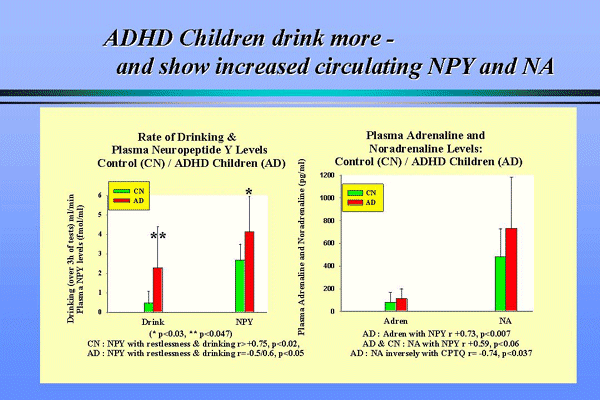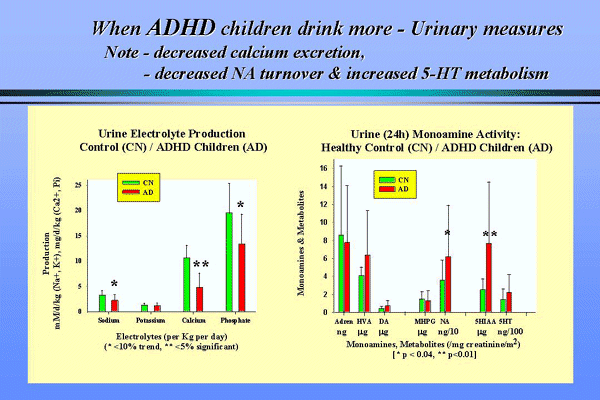|
OADES, R. D., DANIELS, R., & RASCHER, W. (1998). Plasma neuropeptide Y levels, monoamine metabolism, electrolyte excretion, and drinking behavior in children with attention-deficit hyperactivity-disorder (ADHD). Psychiatry Research, 80, 177-186. (request a copy) In accord with our understanding of journal policy,
we present the
pre-publication text (view).
Introduction: This study was conducted against a background of the following four points: a) increased drinking behavior in children with attention-deficit hyperactivity disorder (ADHD), b) the parallel between some behaviours associated with ADHD and with hypertension, c) the use of the spontaneously hypertensive rat as a model for ADHD, and d) similarities in the changes of neuropeptide-Y (NPY) and catecholamine in the studies of hypertension and drinking, Methods: Measures of NPY, catecholamines and electrolyte balance were compared in the plasma and urine of healthy children and those with ADHD. Drinking was monitored during three hours of neuropsychological tests over two days in 14 ADHD (mean 9.8 years-of-age) and 9 healthy children (10.6 years-of-age).
Conclusions:
Increases of drinking and increased levels of circulating NPY in ADHD
children and decreased electrolyte excretion may reflect a common
disturbance in the homeostatic control of metabolism. |


